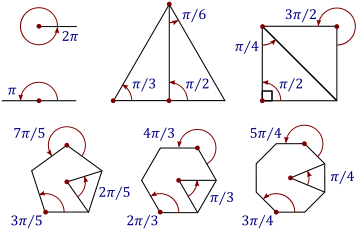Quote:
Originally Posted by riseball  This is something that has fascinated me, I noticed that if you embed a square in a square like a fractal as it gets bigger the perimeter and the areas follow the DOUBLING CIRCIUT. The original square in the middle is a 1X1 square and gets progressively bigger...  |
There is something interesting about "√2", which is why Stan Tenen had great issue with Dan Winter ripping off and misrepresenting his work as related to "Phi".
The phenomena in question is this:
√2 = 1.4142135623730950488016887242097... = R
(R - 1) = 0.4142135623730950488016887242097... = E
(1/E) - 2 = E
This is related to a "geo-synchronous orbit" or "escape velocity" in a gravitational system.
It's also the origin of the spiral shape under the Wadjet (or ""):

It is not a "phi" related spiral. It is a "√2" related spiral.
I find it strange that a reciprocal (1/x) relationship is equivalent to adding or subtracting the number 2. Let's investigate further.
This analysis seems to link √2 to a "doubling" series (or at least a factor progression of 2 = 0,
2,
4, 6,
8, 10, 12, 14,
16, 18, 20, ...etc.)
NB - note that the number "1" is missing from the series... perhaps this echoes the "1/64" missing fraction of the Wadjet:

(1) = 1/2 + 1/4 + 1/8 + 1/16 + 1/32 + 1/64 (+ 1/64 missing from the eye)
The "Golden (Phi) Spiral" and related spirals are called a "", whereas the one involving the √2 reciprocal is called an "".
The former tend to be "static" and the latter "dynamic" when found in Nature.
I found something relating these
Spirals to Fluid Dynamics, Gravity and
Coriolis Forces (involved in some of Nassim's
Physics papers):
r = a + b θ
r/r= [a + b θ]/r
1 = a/r + (b θ)/r
eg,
a = 4
r = 2
b θ = (-2)
where:
r is the radius (distance from locus),
a is the increment of radius (for a given increment in angular displacement),
b is the proportional factor of the angular tracing (θ) of the spiral around the locus (with respect to r)

Then we can say,
(1/E) - 2 = E
(1/E) = E + 2
1 = E^2 + 2E
1 = 1/(E^2 + 2E)
1 = (1/E^2) + (1/2E)
(1/E^2) + (1/2E) => (a/r) + [(b θ)/r]
Then, solve to find the required parameters for this particular Archimedean Spiral (E = √2 - 1).
More on the Logarithmic/Archimedian Spiral discussion from
Stan Tenen can be found:
Golden Mean SpiralGolden Mean Spiral - AddendumAsymmetric Spiral (r θ = 1)
sadukan.
PS If we take Stan Tenen's suggestion (r θ = 1) we end up with,
θ = (1/r)
Now substitute into our previous analysis:
(1/E^2) + (1/2E) => (a/r) + [(b θ)/r]
1 = (1/2E) + (1/E^2)
1 = (a/r) + [(b/r)/r]
r = a + (b/r)
Identical to the form of the original equation:
E = (1/E) - 2
r = a + b θ
so,
a = (-2)
b θ = 1/E
thence,
E = √2 - 1 => r = a + b θ
where,
θ = √2 + 1
√2 = θ - 1
√2 = E + 1
1 = [(θ - 1)/√2] + [(E + 1)/√2]
1 = (1/√2).[(θ - 1) + (E + 1)]
√2 = (θ - 1) + (E + 1)
√2 = θ + E
θ = √2 - E = 1
(r θ = 1)
(E θ = 1)
1 = E√2 - E.E
1 = r√2 - r.E
(E√2 - E.E) = (r√2 - r.E)
(√2 - E) = [r√2)/E] - r
(√2 - E)/r = [(√2)/E] - 1 = 1 + √2
r = √2 + 1
(√2 - E)/(√2 + 1) = 2 + √2
1/(√2 + 1) = E
iff:
r = 1/E
r = E+2
(radius (r) is a factor 2 series of E)
E = √2 - 1
E = r - 2
(r - 2) = [1/(r - 2)] - 2
r(n) = 1/(n - 2)
Wolfram|Alpha gives
this graphical representation,
which gives us the required spiral:
eg,
0 = 1/(-2) = (-0.5) (electron, ie zero radius???)
1 = 1/(-1) = (-1) (whitehole???)
2 = 1/(0) = singularity (blackhole???)
3 = 1/1 = 1
4 = 1/2 = 0.5
5 = 1/3 = 0.333...
6 = 1/4 = 0.25
7 = 1/5 = 0.2
8 = 1/6 = 0.166...
9 = 1/7 = 0.142857...
10 = 1/8 = 0.125
etc...

NB - the plot crosses the axes at two points: 2 and 0.5 (doubling/halving).
PPS I intentionally left off the factor of pi for the part of the angle, to make it easier to follow the argument.
I didn't really want to get into trigonometry, as I think that would just complicate things further.
It's a simple ratio relationship anyway:

PPPS Also, since I haven't done anything like this for a while, for those of you who are able to follow, you might like to check the validity of the foregoing analysis.
PPPPS The above sequence is known as a divergent with associated .
It then also links in to Riemann's - ζ(1) for the Harmonic Series - which is related to
Prime Numbers; implying the unsolved .
"
over it is 19"[74:30]
(
DiYu - 18 Levels of Hell)
Philip LeMarchand

